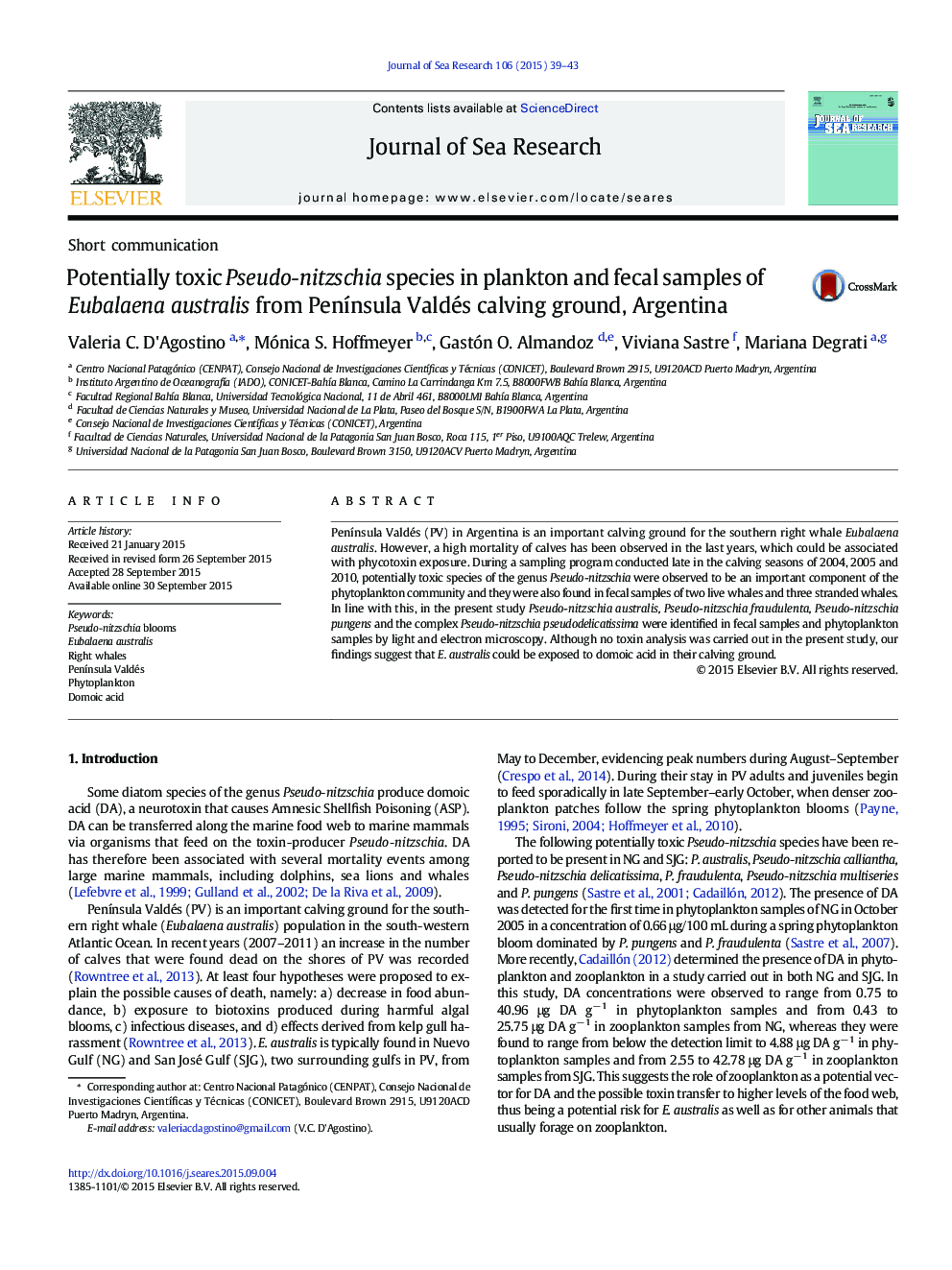| Article ID | Journal | Published Year | Pages | File Type |
|---|---|---|---|---|
| 4549651 | Journal of Sea Research | 2015 | 5 Pages |
•Exposure to biotoxins has been proposed as a hypothesis to explain the E. australis calves' deaths.•Pseudo-nitzschia spp. were abundant in phytoplankton samples at Península Valdés.•Pseudo-nitzschia sp. fragments also were found in fecal samples of E. australis.•Some of the observed Pseudo-nitzschia species are known as DA producers.
Península Valdés (PV) in Argentina is an important calving ground for the southern right whale Eubalaena australis. However, a high mortality of calves has been observed in the last years, which could be associated with phycotoxin exposure. During a sampling program conducted late in the calving seasons of 2004, 2005 and 2010, potentially toxic species of the genus Pseudo-nitzschia were observed to be an important component of the phytoplankton community and they were also found in fecal samples of two live whales and three stranded whales. In line with this, in the present study Pseudo-nitzschia australis, Pseudo-nitzschia fraudulenta, Pseudo-nitzschia pungens and the complex Pseudo-nitzschia pseudodelicatissima were identified in fecal samples and phytoplankton samples by light and electron microscopy. Although no toxin analysis was carried out in the present study, our findings suggest that E. australis could be exposed to domoic acid in their calving ground.
